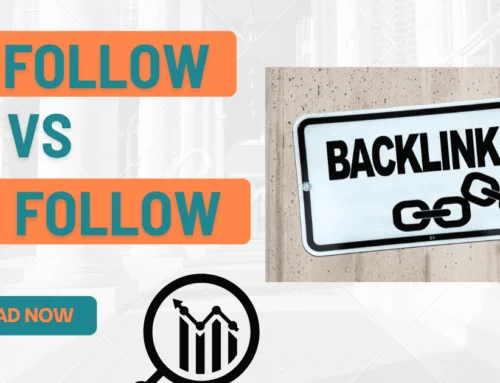The strongest backlinks are organic, naturally occurring backlinks. They can significantly boost your website’s search engine ranking. Here’s the reason:
When a piece of content becomes widely popular, it naturally garners numerous links.
Other folks include links to this content in their own articles, indicating its quality with a simple message: “This article is excellent – check it out!”
By replicating this natural process, you can improve the quality of your backlink profile as well.
What Are the Strongest Backlinks to Get?
Creating backlinks within your existing articles is a smart move, and it’s all about keeping it simple:
Don’t be swayed by technical terms or unnecessary complexity.
If you’re growing a business, you need straightforward SEO strategies that can expand.
So, concentrate on two critical factors:
- Relevance: Does the article match the page you’re linking to?
- Authority: Is the website receiving natural visitors, and does it boast a high Domain Rating?
If the answer is ‘yes’ to both, you’re establishing potent backlinks.
There’s just one more thing to consider: Is your backlink a Dofollow link?
What Are Dofollow Backlinks?
A Dofollow link passes valuable “link juice” to your website. On the flip side, we have the Nofollow link:
This is a snippet of code that signals Google not to follow the link or channel authority to the website.
To identify if a link is Dofollow, here’s what you do:
Simply open the page’s source code where your link is located and look for the Nofollow tag:
<a href=”https://www.examplewebsite.com/” rel=”nofollow”>Anchor Text</a>
If you find the Nofollow tag in the code, it’s a Nofollow link. If there’s no tag, it’s a Dofollow link.
What Backlinks Are NOT Strong?
Blog comments, forum comments, and business directories might not be your best bet. Here’s why:
These types of backlinks are often low in power because they lack exclusivity and authority. They’re open to anyone, and that makes them less valuable.
In fact, many folks use automated software like GSA to create these links, making them less special.
Here’s another problem: These backlinks are attractive to spammy websites that struggle to get links elsewhere. If your site shares a similar backlink profile with these spammy sites, it can harm your search engine rankings.
That’s not all. Google is quite adept at spotting spammy links. If your backlinks don’t seem natural or authoritative, here’s what Google does:
- It crawls your links.
- It identifies the spammy ones.
- And then, it might either ignore them or, even worse, penalize your site’s traffic.
So, it’s best to steer clear of these less-than-ideal backlink sources.
How to Build the Strongest Backlinks to Your Site
When it comes to building links, there are only two paths to choose from.
1. Creating great content (and earning editorial backlinks)
To establish the strongest backlinks for your website, you have two options.
The first method involves creating top-notch, valuable content in your niche. Quality websites within your niche will naturally link back to your site without needing you to request them to do so. These are known as editorial backlinks, as they are earned through the strength of your content.
Although editorial backlinks are highly desirable, they can be challenging to obtain. Nowadays, most websites recognize the importance of original, high-quality content. Simply producing good content and waiting for backlinks to appear is no longer sufficient.
This is where manual link-building campaigns come into play.
2. Run link-building campaigns
Running manual link-building campaigns at scale is a surefire method for creating backlinks to your website. This technique involves personally contacting websites within your field and asking for backlinks.
Here, we will provide you with some campaign ideas to get the strongest backlinks:
- Inclusion in Roundup Lists: In most niches, you’ll find blogs that create lists of the “top ten X products/services/solutions.” These roundups not only drive relevant traffic to the websites listed but also offer backlinks. Seek out such roundups and strive to be featured in them.
- Guest Posting: Guest posting may be a slower process, but it’s an exceptionally effective approach for building links. Simply get in touch with authoritative websites in your niche and propose blog post ideas. In exchange for your valuable content, you’ll receive a backlink in your author bio. When linking back to your website, be sure to use meaningful anchor text, as search engines consider this when assessing backlinks.
- Targeting Competitor Backlinks: Using a tool like SEMrush, it’s simple to discover websites that are linking to your competitors. If a website can link to your competitor, it can also link to your site. So, examine your competitor’s backlinks and get in touch with the websites that provide high-quality backlinks.
- Give the Skyscraper Technique a Shot: This technique involves outperforming your competition in search engine result page rankings by creating longer and superior content on a specific topic.
These link-building strategies can inspire more creative ideas for you. However, before implementing any of these tactics, ensure you assess the quality of the potential links. To do this, gauge how well the potential links align with the metrics we discussed earlier.
Final Thoughts on Getting the Strongest Backlinks
Now, armed with all the essential knowledge about potent backlinks for enhancing your SEO and climbing up those search engine result page rankings, it’s time to take action.
So, start cultivating a robust backlink portfolio by pursuing a diverse array of high-quality backlinks from reputable websites.
If you don’t have the time or the expertise to build the strongest backlinks packages, we are here to help. We have developed personalized SEO strategies that are updated constantly to help businesses and blogs rank higher. Contact our team to learn more about it.


